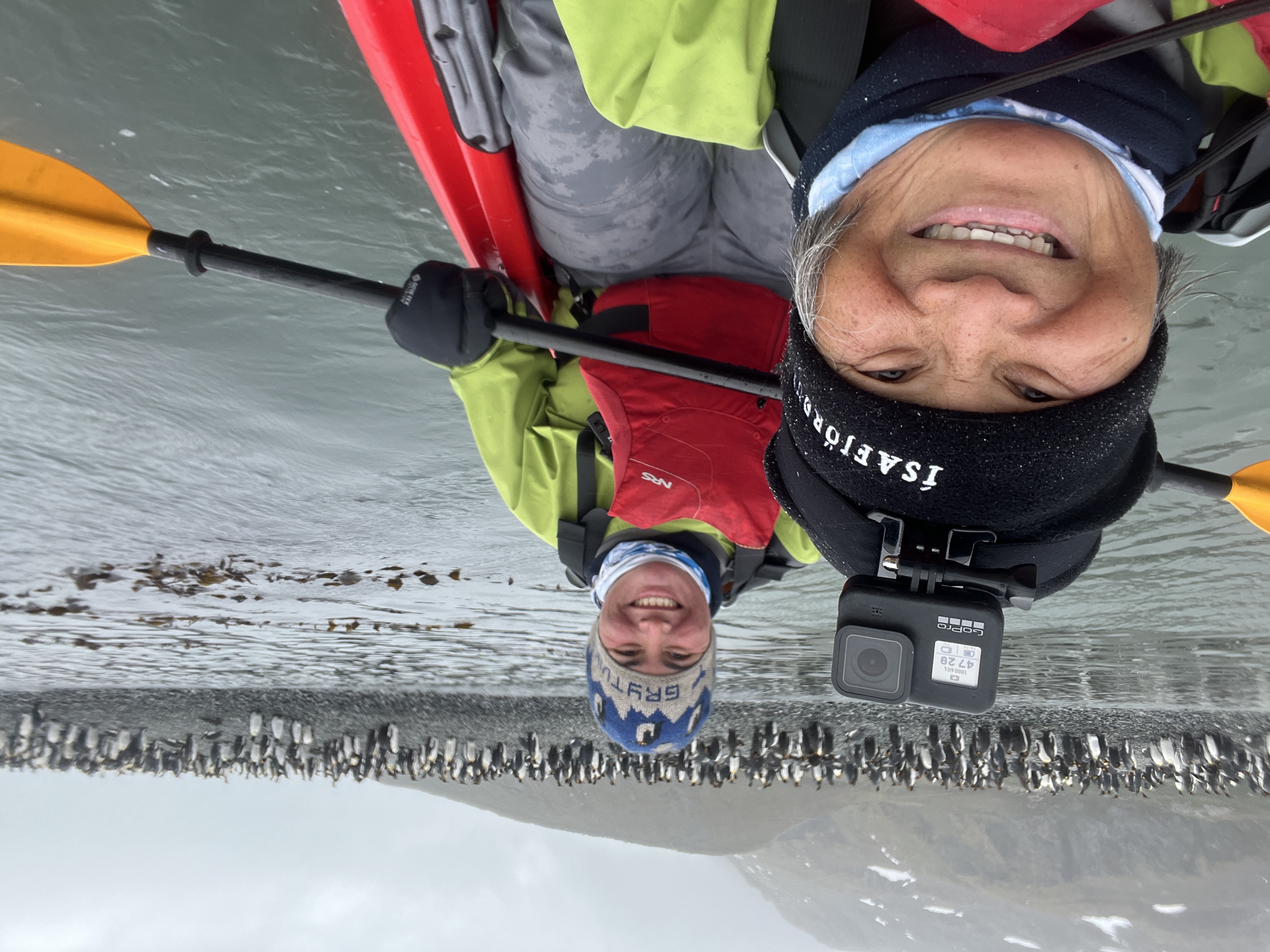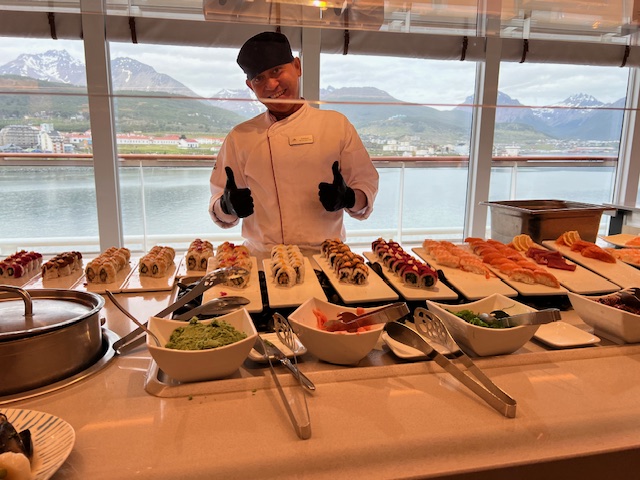
Curator’s statement
Ancient glaciers frozen in time. Towering snow-clad mountains. Azure icebergs, sea and sky. Ferocious howling winds. Silence that takes your breath away. It's hard to grasp the pristine immensity of the 7th continent. But what made Antarctica truly unique for me was the exuberant wildlife, fearless and thriving here at the end of the world, from waddling penguins to playful fur seals to hungry humpbacks. Ready to plan? Here's everything you need to know.
The Fora Difference
Book with Mei-Mei to access exclusive perks and experiences on your trip.
Killer perks
Free upgrades, spa credits and more—we got you
Personalized recs
Customized travel planning for your style
Insider knowledge
Expert advice from people who’ve actually been there
Where to stay in Antarctica
Unlock perks by contacting Mei-Mei to book your trip.
Things to do in Antarctica

Kayaking in Antarctica with penguins and whales!
What is the weather like?
In December, the temperature was mostly around 33 degrees, with frequent ferocious, frigid winds. We had a variety of conditions, often on the same day, ranging from deep fog to gray overcast to crystal clear skies and sea. Most polar expedition cruises will include complimentary jackets that you get to keep.
How bad is the dreaded Drake passage?
This 600-mile swath between Argentina and Antarctica is where the Atlantic, Pacific and Southern seas collide. It can be a violent two days for ships, with waves up to 40 feet. But that only happens about 20–30% of the time — the average waves are about 15 feet. We got lucky with the Drake Lake vs. the Drake Shake.
Where exactly is Antarctica?
The continent lies below South America, Africa and New Zealand. Antarctica generally refers to everything south of the line of latitude at 60° south. That’s the area covered by the 1959 Antarctic treaty in which 12 countries pledged to make “a natural reserve, devoted to peace and science.” Today, more than 20 countries operate research stations there — the US has three, including the Amundsen-Scott station at the South Pole.
Antarctica is massive, about the size of the US and Mexico combined. It’s actually a desert because there’s so little precipitation, yet it contains 90% of all the ice on Earth, according to NASA, some going down three miles deep. Antarctica holds the record for the lowest temperature ever recorded, -128 degrees Fahrenheit at Vostok station, and the windiest place on earth, with katabatic winds (also called williwaws) roaring from higher altitudes to sea levels that can hit 180 mph and up.
Most tourists will go to the more accessible, less exposed western side of the Antarctic peninsula, which juts up about 800 miles from Ushuaia, Argentina.
What’s the difference between Antarctica and the Arctic?
Simplistically, the Arctic is by the North Pole and has polar bears. The Antarctic (“opposite” Arctic) is by the South Pole and has penguins. The Arctic is an ocean surrounded by continents, while Antarctica is an ice-covered continent.
What about South Georgia, the Falklands and the Shetlands?
These are less-frequented British Overseas Territories somewhat near the Antarctic peninsula that boast incredible densities of wildlife: millions of penguins, seals and birds. The Falklands and South Shetlands are archipelagos, while South Georgia is a narrow island. During the height of the breeding season in November/December, South Georgia is said to have more wildlife per square foot than any other place on the planet. Nearly 5 million seals and 1 million King penguins, half of the world’s population, are in South Georgia — not in Antarctica. The small king penguin colony at Port Stanley in the Falklands and the enormous one in South Georgia were two of the most remarkable experiences we’ve ever had.
Where can I see Emperor penguins?
That’s the holy grail for Antarctic wildlife fans. Emperors are the largest penguins, nearly four feet tall, with the cutest fluffy chicks. They flourish on sea ice in the south, breeding in the frigid winter so their chicks can fledge in summer.
Snow Hill Island is the northernmost and most accessible of the emperor colonies in Antarctica, hosting about 10,000 of the continent’s 400,000 penguins. But it’s on the east side of the peninsula, in the treacherous Weddell Sea (where Ernest Shackleton’s Endurance was ice-bound and lost). Only a few companies offer trips there, usually once in October or November. And there’s no guarantee you will actually land via helicopter or ship and hike successfully to the colony. Only eight landings were made in the 2023–24 season.
When should I go?
The season runs October–March, during the “temperate” summer when the sun is out for nearly 20 hours and the ice has begun melting. Usually, earlier is more ice, nesting penguins and seal pups — later is more chicks and whales. (But we had amazing humpback whale encounters in December!)
Which itinerary and ship should I pick?
The most common journeys are 9–12 day cruises from Argentina or Chile to the Antarctic peninsula, going through the Gerlache Strait and its icebergs and whales. These include two days in the Drake going and two days coming back, with prices starting at about $1,000 per person per night. (There are fly-the-Drake options!) Pay attention to the ratio of sea days vs. Antarctica days and consider what might happen if weather severely hampers one or two days.
Expedition cruises are increasing as tourism grows: 78,848 people made landings in Antarctica last season, up 40 percent vs. 2019, according to the International Association of Antarctica Tour Operators (IAATO). By comparison, less than 14,000 passengers made it to South Georgia in the 2022–23 season.
There are 61 polar vessels listed as members by IAATO, carrying from 13 to 500 passengers, and 21 yachts that take 8–12 guests. Only 100 people are permitted on shore at one time, so larger ships alternate landings. Sleek, agile and luxurious, newer ships feature special icebreaker hulls and state-of-the-art stabilizers, along with a fleet of Zodiacs for exploring. (Many of these will journey to the Arctic as well, from April–September.)
Larger cruise ships also go to Antarctica but are not allowed to do any landings if they hold 501 passengers or more. These would be the most economical.
A voyage that includes the Falklands and South Georgia is offered less frequently, takes longer and costs more — but it also goes through the Drake just once. If you choose this option, it will greatly narrow down your choices. We highly recommend it!
How fit do I need to be?
You are going to one of the most remote places on Earth. So you need to be healthy enough not to worry about access to a hospital or sophisticated emergency care. Before embarking, you will have to fill out a medical screening questionnaire and get a doctor’s sign-off.
To go cruising or ashore, you’ll need to get in and out of rubbery rafts floating on water, and step into two feet of water for landings. On land or fast ice (sea ice that’s attached to land and thus more stable), there may be short walks on slippery snow or rocky terrain or more intense hikes. There may be a “test” if you want to kayak to see if you can get in and out of Zodiacs into the kayak. Always, there will be many helping hands.
Like any cruise, you can enjoy yourself just by staying aboard. But better to enhance your fitness enough to fully experience this unique adventure.
What should I expect?
Your journey will include sea days to travel the hundreds of miles to Antarctica, Zodiac cruising, Zodiac landings, some walks or hikes and perhaps kayaking or submarine diving or even camping and snorkeling! Your expedition team will include experts in mammals, birds, geology, history and more, providing daily lectures and insights.
It’s an expedition cruise, so expect the unexpected. Weather will trump all else. Be prepared to “pivot” daily or multiple times a day as wind, ice, avian flu or other factors impact planned itinerary and excursions. Of our 11 original destinations, we only went to four. But we enjoyed all the alternative sites.
Our second expedition day, in Grytviken, South Georgia, was a great example of going with the flow. We awoke to see that the first kayak of the day (ours!) was canceled due to weather, and that ice blocked entry into the small town. Saddened, we were just about to board a 2 pm cruise when that was canceled. The reason: conditions had improved enough that everyone could go ashore instead. As we headed out to stroll Grytviken, we were thrilled to learn we were rebooked for a 4 pm kayak!
Where do I sign up?
Ready to go?! Once you’ve decided on your preferred itinerary, dates and ships, sign up for those companies’ email alerts. They often offer discounts closer to sailing or for early-bird bookings. Other resources include leveraging a travel advisor, Facebook groups devoted to Antarctica, Cruisecritic or travel companies specializing in the polar region. Then start counting down to your adventure!
As a Fora travel advisor, I would love to help you make it happen.
Day trips
You'll likely fly into Buenos Aires or Santiago. There are some nice pre and post excursions to consider in addition to those cities, such as Iguazu Falls and Patagonia.
Places to eat & drink in Antarctica

Sushi chef aboard Viking's Octantis
Depending on what cruise ship you choose, most will be nearly all-inclusive, often with luscious gourmet dining. You'll likely have to pay extra for premium alcohol, spa services and really special outings like submarines or helicopters.
Need to know
Our world is changing rapidly — don't wait too long to make your Antarctica dream come true!

Travel Advisor
Mei-Mei Kirk

Get in touch with Mei-Mei
Did you like this guide? Reach out to customize and book your own experience. Or, just to chat about travel in general.
You can expect a response from Mei-Mei within 1–2 business days. You’ll also be subscribed to our traveler newsletter (you can unsubscribe at any time).
For more inspiration and insider recommendations, visit our Antarctica page.